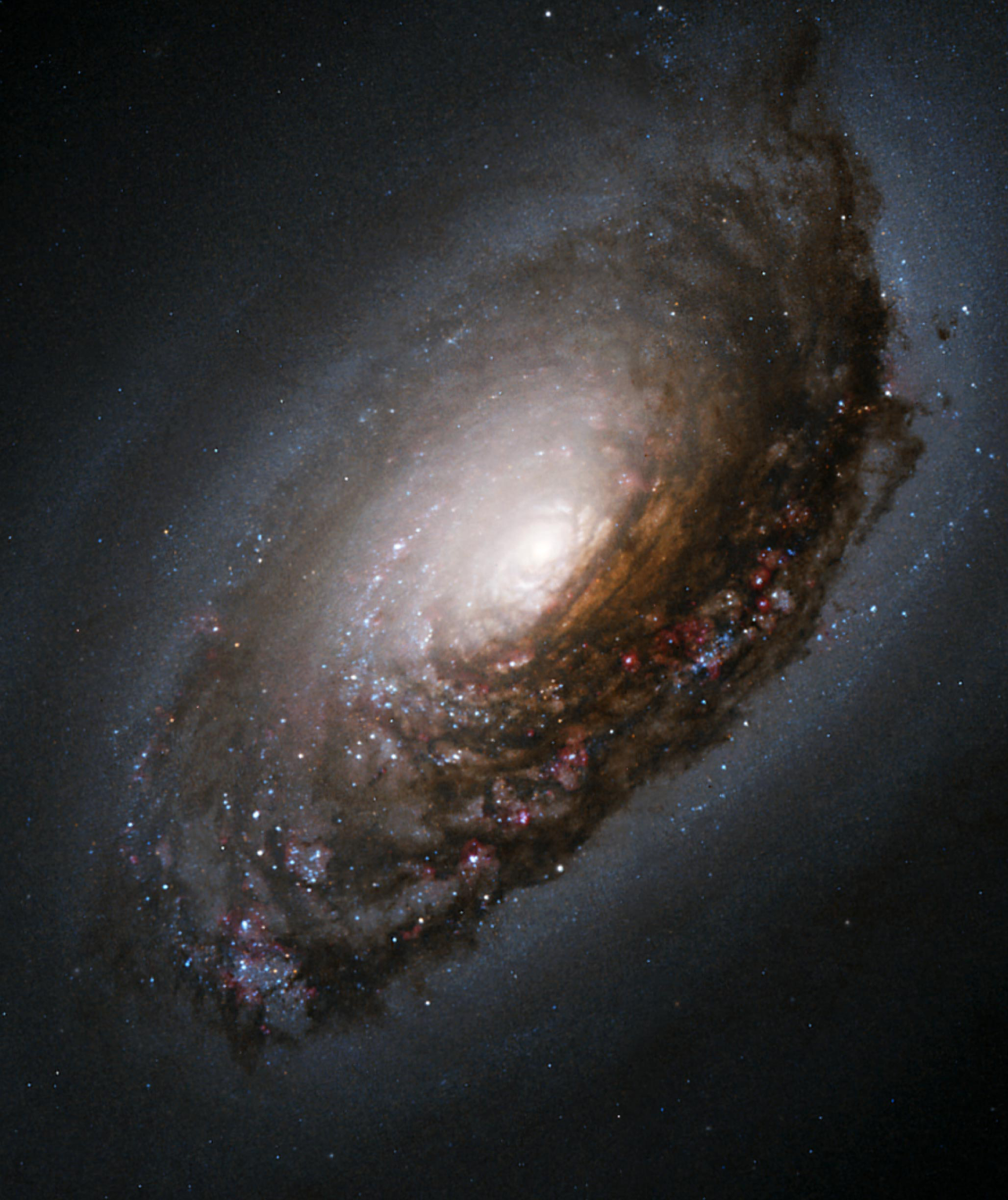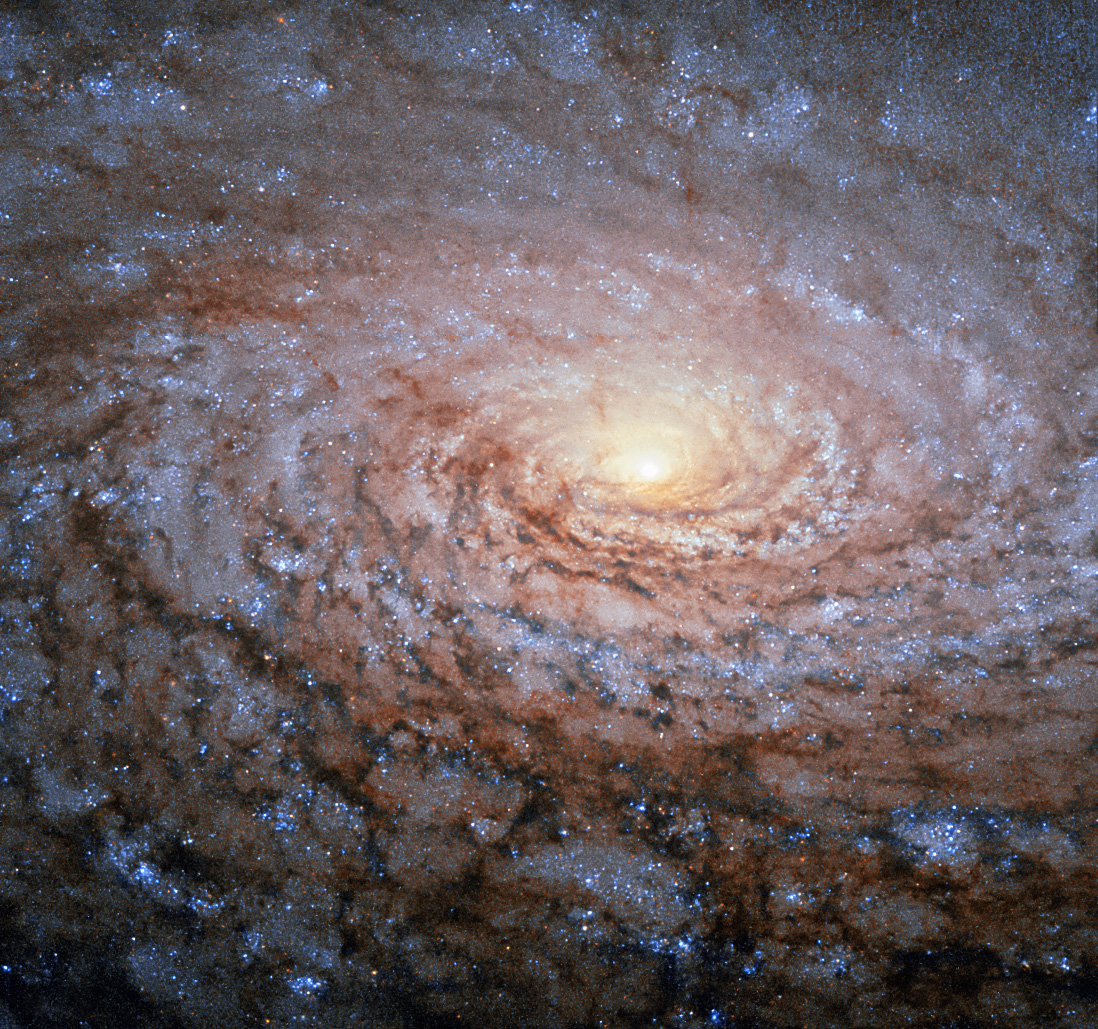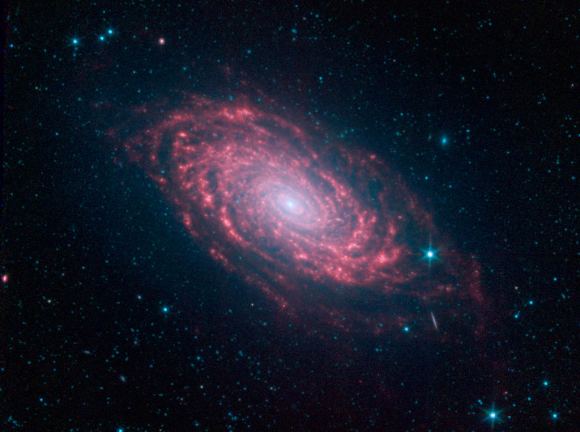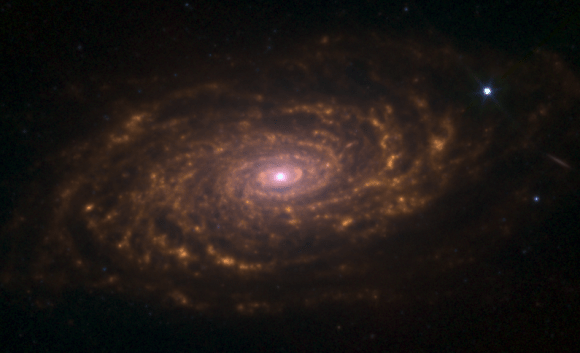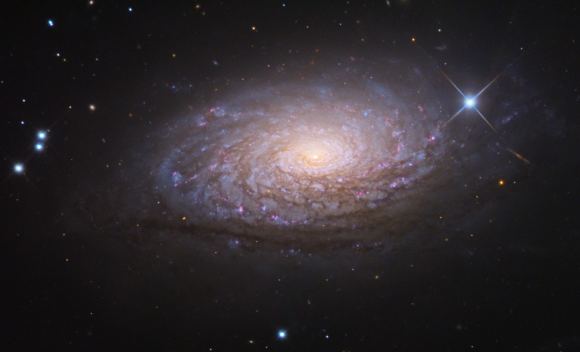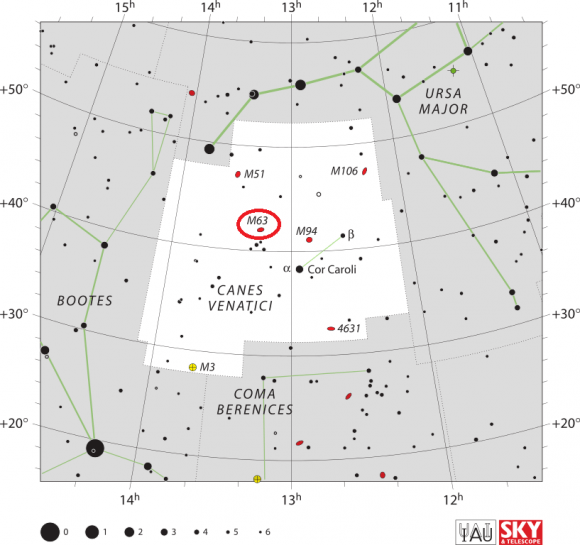Welcome back to Messier Monday! Today, we continue in our tribute to our dear friend, Tammy Plotner, by looking at that “evil” customer known as Messier 64 – aka. the “Black Eye Galaxy”!
In the 18th century, while searching the night sky for comets, French astronomer Charles Messier kept noting the presence of fixed, diffuse objects he initially mistook for comets. In time, he would come to compile a list of approximately 100 of these objects, hoping to prevent other astronomers from making the same mistake. This list – known as the Messier Catalog – would go on to become one of the most influential catalogs of Deep Sky Objects.
One of these objects is known as Messier 64, which is also known as the “Black Eye” or “Evil Eye Galaxy”. Located in the Coma Berenices constellation, roughly 24 million light-years from Earth, this spiral galaxy is famous for the dark band of absorbing dust that lies in front of the galaxy’s bright nucleus (relative to Earth). Messier 64 is well known among amateur astronomers because it is discernible with small telescopes.
Description:
Residing about 19 million light years from our home galaxy, the “Sleeping Beauty” extends across space covering an area nearly 40,000 light years across, spinning around at a speed of 300 kilometers per second. Toward its core is a counter-rotating disc approximate 4,000 light years wide and the friction between these two may very well be the contributing factor to the huge amounts of starburst activity and distinctive dark dust lane.
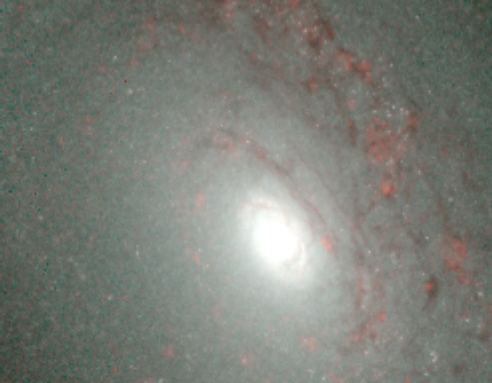
Stars themselves appear to be forming in two waves, first evolving outside following the density gradient where abundant interstellar matter was waiting, and then evolving slowly. As the material from the mature stars began beig pushed back by their stellar winds, supernovae, and planetary nebulae, increased amounts of interstellar matter once again compressed, beginning the process of star formation again. This “second wave” may very well be represented by the dark, obscuring dust lane we see.
But, M64 isn’t without it share of turmoil. Its dual rotation may have started as a collision when two galaxies merged some billion years ago – or so theory would suggest. But did it? As Robert Braun and Rene Walterbos explained in their 1995 study:
“This galaxy is known to contain two nested, counter rotating, gas disks of a few 108 solar mass each, with the inner disk extending to approximately 1 kpc and the outer disk extending beyond. The stellar kinematics along the major axis, extending across the transition region between the two gas disks, show no hint of velocity reversal or increased velocity dispersion. The stars always rotate in the same sense as the inner gas disk, and thus it is the outer disk which ‘counterrotates’. The projected circular velocities inferred from the stellar kinematics and from the H I disks agree to within approximately 10 km/s, supporting other evidence that the stellar and gaseous disks are coplanar to approximately 7 deg. This upper limit is comparable to the mass of detected counter rotating gas. This low mass of counter rotating material, combined with the low-velocity dispersion in the stellar disk, implies that NGC 4826 cannot be the product of a retrograde merger of galaxies, unless they differed by at least an order of magnitude in mass. The velocities of the ionized gas along the major axis are in agreement with that of the stars for R less than 0.75 kpc. The subsequent transition toward apparent counter rotation of the ionized gas is spatially well resolved, extending over approximately 0.6 kpc in radius. The kinematics of this region are not symmetric with respect to the galaxy center. On the southeast side there is a significant region in which vproj (H II) much less than vcirc approximately 150 km/s, but sigma (H II) approximately 65 km/s. The kinematic asymmetries cannot be explained with any stationary dynamical model, even is gas inflow or warps were invoked. The gas in this transition region shows a diffuse spatial structure, strong (N II) and (S II) emission, as well as the high-velocity dispersion. These data present us with the conundrum of explaining a galaxy in which a stellar disk, and two counter rotating H I disks, at smaller and much larger radii, appear in equilibrium and nearly coplanar, yet in which the transition region between the gas disks is not in steady state.”
So is all what it really appears to be? Are new stars being born in the darkness? As A. Majeed (et al) indicated in their 1999 study:
“The Evil Eye galaxy (NGC 4826; M64) is distinguished by an asymmetrically placed, strongly absorbing dust lane across its prominent bulge. We obtained a long-slit spectrum of NGC 4826, with the slit across the galaxy’s nucleus, covering equal parts of the obscured and the unobscured portions of the bulge. By comparing the spectral energy distributions at corresponding positions on the bulge, symmetrically placed with respect to the nucleus, we were able to study the wavelength dependent effects of absorption, scattering, and emission by the dust, as well as the presence of ongoing star formation in the dust lane. We report the detection of strong extended red emission (ERE) from the dust lane within about 15 arcsec distance from the nucleus of NGC 4826. The ERE band extends from 5400 A to 9400 A, with a peak near 8800 A. The integrated ERE intensity is about 75 % of that of the estimated scattered light from the dust lane. The ERE shifts toward longer wavelengths and diminishes in intensity as a region of star formation, located beyond 15 arcsec distance, is approached. We interpret the ERE as originating in photoluminescence by nanometer-sized clusters, illuminated by the galaxy’s radiation field, in addition to the illumination by the star-forming complex within the dust lane. When examined within the context of ERE observations in the diffuse ISM of our Galaxy and in a variety of other dusty environments such as nebulae, we conclude that the ERE photon conversion efficiency in NGC 4826 is as high as found elsewhere, but that the size of the nanoparticles in NGC 4826 is about twice as large as those thought to exist in the diffuse ISM of our Galaxy.”
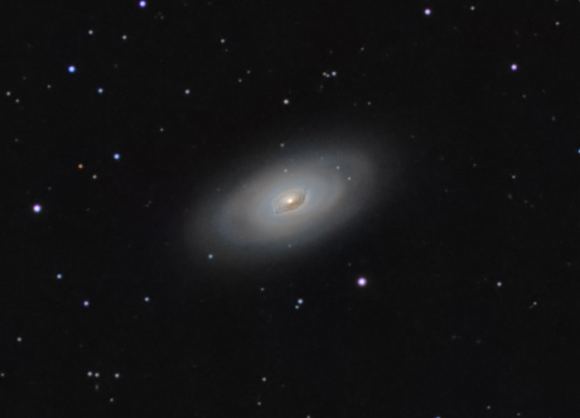
But the debate is still on. As R.A. Walterbos (et al) expressed in their 1993 study:
“The close to coplanar orientation of the gas disks is one aspect which is in good agreement with what is expected on the basis of a merger model for the counter-rotating gas. The rotation direction of the inner gas disk with respect to the stars, however, is not. In addition, the existence of a well defined exponential disk probably implies that if a merger did occur it must have been between a gas-rich dwarf and a spiral, not between two equal mass spirals. The stellar spiral arms of NGC 4826 are trailing over part of the disk and leading in the outer disk. Recent numerical calculations by Byrd et al. for NGC 4622 suggest that long lasting leading arms could be formed by a close retrograde passage of a small companion. In this scenario, the outer counter-rotating gas disk in NGC 4826 might be the tidally stripped gas from the dwarf. However, in NGC 4826 the outer arms are leading, while it appears that in NGC 4622 the inner arms are leading. A realistic N-body/hydro simulation of a dwarf-spiral encounter is clearly needed. It may also be possible that the counter-rotating outer gas disk is due to gradual infall of gas from the halo, rather than from a discrete merger event.”
History of Observation:
M64 was discovered by Edward Pigott on March 23, 1779, just 12 days before Johann Elert Bode found it independently on April 4, 1779. Roughly a year later, Charles Messier independently rediscovered it on March 1, 1780 and cataloged it as M64. Said Pigot:
“.. on the 23rd of March [1779], I discovered a nebula in the constellation of Coma Berenices, hitherto, I presume, unnoticed; at least not mentioned in M. de la Lande’s Astronomy, nor in M. Messier’s ample Catalogue of nebulous Stars [of 1771]. I have observed it in an acromatic instrument, three feet long, and deduced its mean R.A. by comparing it to the following stars Mean R.A. of the nebula for April 20, 1779, of 191d 28′ 38″. Its light being exceedingly weak, I could not see it in the two-feet telescope of our quadrant, so was obliged to determine its declination likewise by the transit instrument. The determination, however, I believe, may be depended upon to two minutes: hence, the declination north is 22d 53″1/4. The diameter of this nebula I judged to be about two minutes of a degree.”
However, Pigott’s discovery got published only when read before the Royal Society in London on January 11, 1781, while Bode’s was published during 1779 and Messier’s in late summer, 1780. Pigott’s discovery was more or less ignored and recovered only by Bryn Jones in April 2002! (May the good Mr. Pigot know that he was remembered here and his reports placed first!!)
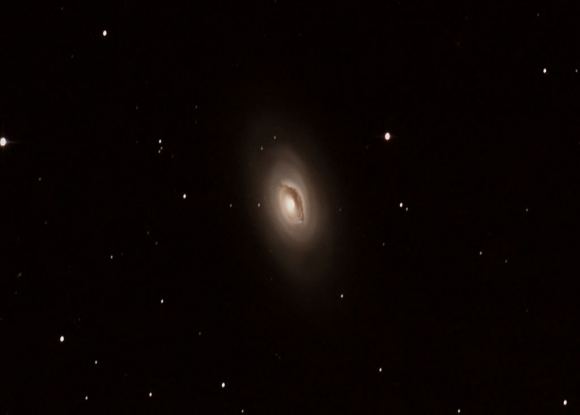
So how did it get the name “Black Eye Galaxy”? We have Sir William Herschel to thank for that: “A very remarkable object, much elongated, about 12′ long, 4′ or 5′ broad, contains one lucid spot like a star with a small black arch under it, so that it gives one the idea of what is called a black eye, arising from fighting.” Of course, John Herschel perpetuated it when he wrote in his own notes:
“The dark semi-elliptic vacancy (indicated by an unshaded or bright portion in the figure,) which partially surrounds the condensed and bright nucleus of this nebula, is of course unnoticed by Messier. It was however seen by my Father, and shown by him to the late Sir Charles Blagden, who likened it to the appearance of a black eye, an odd, but not inapt comparison. The nucleus is somewhat elongated, and I have a strong suspicion that it may be a close double star, or extremely condensed double nebula.”
Locating Messier 64:
Locating M64 isn’t particularly easy. Begin by identifying bright orange Arcturus and the Coma Berenices star cluster (Melotte 111) about a hand span to the general west. As you relax and let your eyes dark adapt, you will see the three stars that comprise the constellation of Coma Berenices, but if you live under light polluted skies, you may need binoculars to find its faint stars. Once you have confirmed Alpha Comae, star hop approximately 4 degrees north/northwest to 35 Comae. You will find M64 around a degree to the northeast of star 35.
While Messier 64 is binocular possible, it will require very dark skies for average binoculars and will only show as a very small, oval contrast change. However, in telescopes as small as 102mm, its distinctive markings can be seen on dark nights with good clarity. Don’t fight over it… There’s plenty of dark dustlane in this Sleeping Beauty to go around!
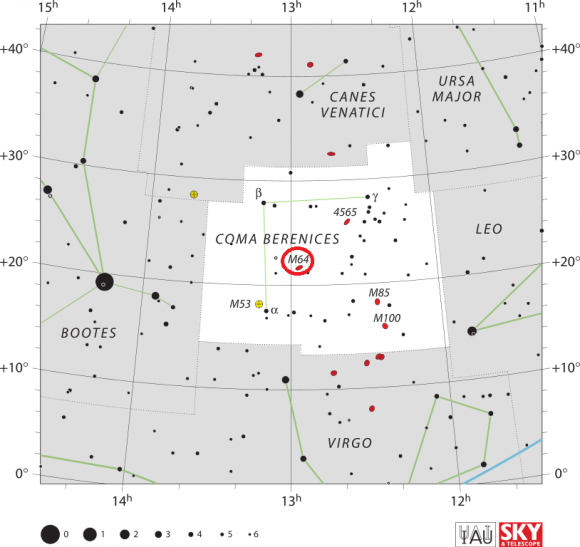
And here are the quick facts on this Messier Object to help you get started:
Object Name: Messier 64
Alternative Designations: M64, NGC 4826, The Black Eye Galaxy, Sleeping Beauty Galaxy, Evil Eye Galaxy
Object Type: Type Sb Spiral Galaxy
Constellation: Coma Berenices
Right Ascension: 12 : 56.7 (h:m)
Declination: +21 : 41 (deg:m)
Distance: 19000 (kly)
Visual Brightness: 8.5 (mag)
Apparent Dimension: 9.3×5.4 (arc min)
We have written many interesting articles about Messier Objects here at Universe Today. Here’s Tammy Plotner’s Introduction to the Messier Objects, M1 – The Crab Nebula, and David Dickison’s articles on the 2013 and 2014 Messier Marathons.
Be to sure to check out our complete Messier Catalog. And for more information, check out the SEDS Messier Database.
Sources:

